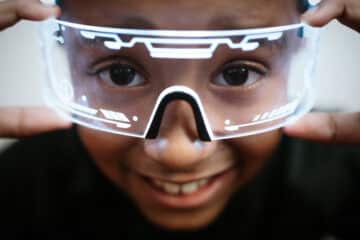 This year, British Columbia implemented an innovative new curriculum called Building Students Success for all kindergarten through 9th grade students in the province. The curriculum, developed by educators and based on the latest research and international best practice, is “concept-based and competency-driven.” It is designed to be flexible to allow students to “follow their interests and passions”, what the province calls personalized learning, and to allow teachers to use different types of learning environments to teach the content. The idea is to learn “basics” and core competencies through real world and hands-on experiences.
This year, British Columbia implemented an innovative new curriculum called Building Students Success for all kindergarten through 9th grade students in the province. The curriculum, developed by educators and based on the latest research and international best practice, is “concept-based and competency-driven.” It is designed to be flexible to allow students to “follow their interests and passions”, what the province calls personalized learning, and to allow teachers to use different types of learning environments to teach the content. The idea is to learn “basics” and core competencies through real world and hands-on experiences.
The design of the curriculum includes core competencies, skill foundations and subject area curriculum. The three core competencies — communications, creative & critical thinking, and personal & social competence — and two skill foundations — literacy and math —are integrated into all subject areas. There are “profiles” for each competency, which are descriptions of how students can show increasing levels of mastery of the competency written from a student’s perspective. For example, critical thinking is broken down into three “facets”: analyze and critique; question and investigate; and develop and design. The ways to show mastery of “analyze and critique” are:
- I can show if I like something or not;
- I can identify criteria that I can use to analyze;
- I can analyze evidence from different perspectives;
- I can reflect on and evaluate my thinking, products and actions; and
- I can analyze my own assumptions and beliefs and consider views that do not fit with them.
Grade by grade curriculum was developed in the following subject areas:
- Applied design, skills and technology
- Arts education
- Career education (now a subject for all grade levels)
- Core French
- French (as a first and second language)
- English language arts
- Mathematics
- Physical and health sciences
- Science
- Social Studies

Each subject area at each grade level has a set of “big ideas” that students need to understand, curricular competencies that describe what students should be able to do in any given subject in each grade, and curriculum “content” that describes what students should know. The British Columbia Ministry of Education describes this model as Know, Do, Understand. Here are some examples of Big Ideas, Competencies and Content for second grade math:
- Big ideas: Numbers to 100 represent quantities that can be decomposed into 10s and 1s and concrete items can be represented, compared and interpreted pictorially in graphs.
- Curricular competencies: Estimate reasonably; model mathematics in contextualized experiences; and explain and justify mathematical ideas and decisions.
- Curriculum content: Repeating and increasing patterns; multiple attributes of 2 and 3D objects; and symbolic representations of equality and inequality.
The Education Ministry provides instructional samples for each grade in each subject, with ideas about supporting struggling students, providing extra challenges for advanced students and including aboriginal students. The samples focus on the “big ideas” in each subject and grade and include an inquiry question, an activity, sample assessment questions and samples of student work. The curriculum, which has been in development since 2012, was piloted on a voluntary basis last school year. This year the 10th through 12th grades will pilot a new draft curriculum which will, in turn, be fully implemented in the 2017-18 school year.
The province is coupling the new curriculum with changes in provincial assessments, to ensure that assessments are aligned with the curriculum. As part of this shift, the province is eliminating the five subject-based assessments currently required for high school students and replacing it with two assessments, one in literacy and one in mathematics. Schools are expected to use classroom-based assessment for the other subject areas. Career education is also a new requirement at the high school level and will be required for graduation. Provincial assessments are also currently given at 4th and 7th grade. These are now under review and will likely be revised over the next school year.
For more information, see the Ministry of Education website.





